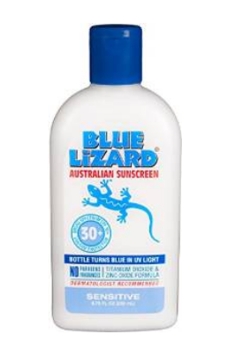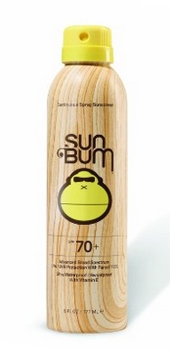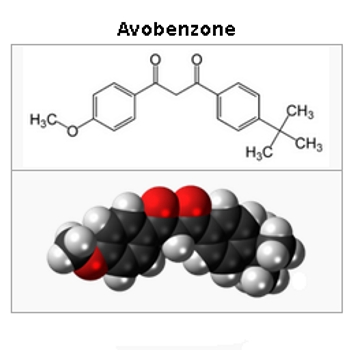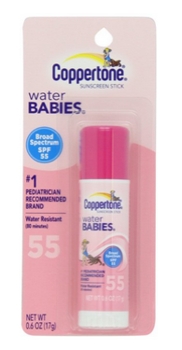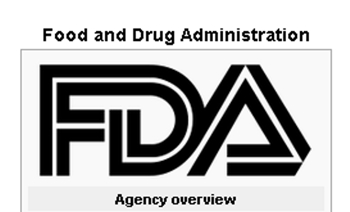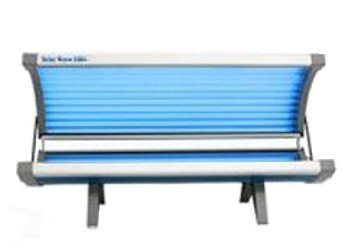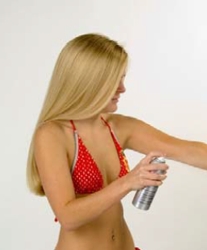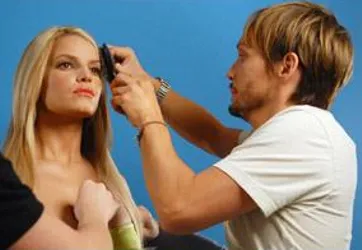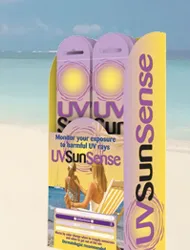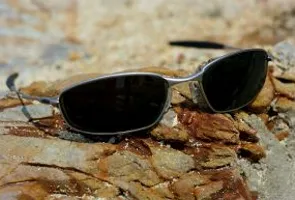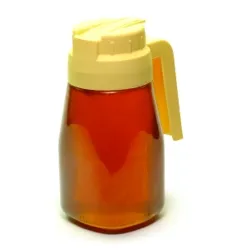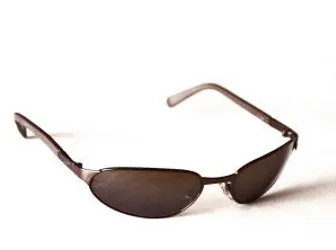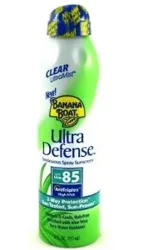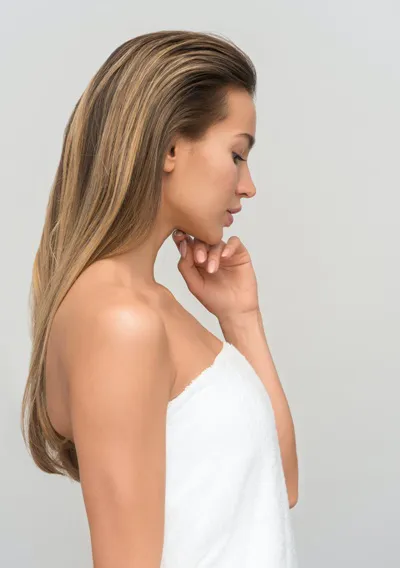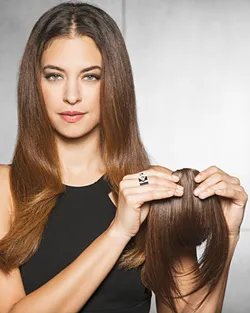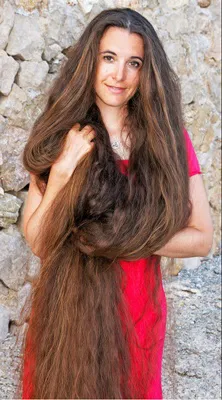
Best Sunscreen Scoops
Best Sunscreen Scoops Image of Long Blonde Hair Flowing In The Sunlight - Morgan Session - Unsplash.com - Creative Commons License - All Rights Reserved
Image of Long Blonde Hair Flowing In The Sunlight - Morgan Session - Unsplash.com - Creative Commons License - All Rights ReservedAccording to the CDC's Vital Signs Report skin cancer is the most common form of cancer in the US. In 2011, there were more than 65,000 cases of melanoma, the most deadly form of skin cancer.
This is a very long, but extremely important blog regarding the best sunscreen scoops everyone should read. Not only is melanoma very dangerous, it can spread to other parts of the body and causes over 9,000 deaths every year. People who die of melanoma lose an average of 20 years of life expectancy.
Melanoma can be caused by too much exposure to ultraviolet (UV) rays from sun or sources such as indoor tanning. Without additional prevention efforts, melanoma will continue to increase in the next 15 years.
Check out the best sunscreen scoops, questions and answers below:
Q. Who needs to use sunscreen?
 iZombie -- "Blaine's World" --Pictured Rose McIver as Olivia "Liv" Moore - Photo: Diyah Pera/The CW -- © 2015 The CW Network, LLC. All rights reserved.
iZombie -- "Blaine's World" --Pictured Rose McIver as Olivia "Liv" Moore - Photo: Diyah Pera/The CW -- © 2015 The CW Network, LLC. All rights reserved.A. Everyone! Why? More than 1 million cases of skin cancer are diagnosed in the United States every year¹.
Sun History
1. Many studies have found an association between sunburns and enhanced risk for melanoma, the deadliest form of skin cancer².
2. The Food and Drug Administration (FDA) and the American Academy of Dermatology recognize six skin categories (See Reference Notes #3-4) which are listed below with examples of celebrities who might likely fit into each of the skin types:
Skin Type January 11, 2015
January 11, 201572nd Annual Golden Globe Awards - Pictured: (l-r) Benedict Cumberbatch, Jennifer Aniston, Presenters at the 72nd Annual Golden Globe Awards held at the Beverly Hilton Hotel on January 11, 2015 -- (Photo by: Paul Drinkwater/NBC)
Sunday, January 11, 2015 (LIVE 5-8 p.m. PT/8-11 p.m. ET)
2015 NBC Universal Media, LLC
1. Always burns easily, never tans, extremely sun-sensitive skin.
Olivia "Liv" Moore (CW's iZombie) is a classic example of Type #1.2. Usually burns easily, tans minimally, very sun-sensitive skin.
Jennifer Aniston is considered to be a Type #2.3. Sometimes burns, tans gradually to light brown, sun-sensitive skin.
Sandra Bullock is often referenced as a Type #3.4. Burns minimally, always tans to moderate brown, minimally sun-sensitive skin.
Eva Mendes is a Type #4.5. Rarely burns, tans well, sun-insensitive skin.
Mindy Kaling is a Type #5.6. Almost never burns, deeply pigmented, sun-insensitive skin.
Kanye West is referenced as a Type #6.The American Academy of Dermatology recommends that, regardless of skin type, a broad-spectrum (protects against UVA and UVB rays), water-resistant sunscreen with a Sun Protection Factor (SPF) of at least 30 should be used year-round.
Q. What are UVA and UVB rays?A. Sunlight consists of two types of harmful rays:
1. ultraviolet A (UVA) rays
2. ultraviolet B (UVB) rays Actress & fashion icon Eva Mendes on THE TALK, September 25, 2013 on the CBS Television Network. Photo: Monty Brinton/CBS ©2013 CBS Broadcasting Inc. All Rights Reserved
Actress & fashion icon Eva Mendes on THE TALK, September 25, 2013 on the CBS Television Network. Photo: Monty Brinton/CBS ©2013 CBS Broadcasting Inc. All Rights ReservedUVA rays (which pass through window glass) penetrate deeper into the dermis, the thickest layer of the skin. UVA rays can cause suppression of the immune system, which interferes with the immune system's ability to protect you against the development and spread of skin cancer.
UVA exposure also is known to lead to signs of premature aging of the skin such as wrinkling and age spots.
The UVB rays are the sun's burning rays (which are blocked by window glass) and are the primary cause of sunburn.
A good way to remember it is that UVA rays are the aging rays and UVB rays are the burning rays. Excessive exposure to both forms of UV rays can lead to the development of skin cancer.The United States Department of Health and Human Services has declared ultraviolet (UV) radiation from the sun and artificial sources, such as tanning beds and sun lamps, as a known carcinogen (cancer-causing substance). (See Reference Note #5)
Q. When should sunscreen be used?
A. Sunscreen should be applied every day to exposed skin, and not just if you are going to be in the sun. UVB rays cannot penetrate glass windows, but UVA rays can, leaving you prone to these damaging effects if unprotected.
For days when you are going to be indoors, apply sunscreen on the areas not covered by clothing, such as the face and hands.
Sunscreens can be applied under makeup, or alternatively, there are many cosmetic products available that contain sunscreens for daily use.
 Kanye West -SATURDAY NIGHT LIVE 40TH ANNIVERSARY SPECIAL -- (Photo by: Theo Wargo/NBC)
Kanye West -SATURDAY NIGHT LIVE 40TH ANNIVERSARY SPECIAL -- (Photo by: Theo Wargo/NBC)February 15, 2015 SNL 40th Red Carpet Special (7-8 p.m. ET)
2015 NBC Universal Media, LLC
Sun protection is the principal means of preventing premature aging and skin cancer. It's never too late to protect yourself from the sun and minimize your future risk of skin cancer. Don't reserve the use of sunscreen only for sunny days.
Even on a cloudy day, up to 80 percent of the sun's ultraviolet rays can pass through the clouds. In addition, sand reflects 25 percent of the sun's rays and snow reflects 80 percent of the sun's rays. (See Reference Note #6)
Q. How much sunscreen should be used, and how often should it be applied?
A. Sunscreens should be applied to dry skin 15 to 30 minutes before going outdoors.
When using sunscreen, be sure to apply it to all exposed areas and pay particular attention to the face, ears, hands, and arms. Coat the skin liberally and rub it in thoroughly — most people apply only 25 to 50 percent of the recommended amount of sunscreen. (See Reference Note #7)
1. One ounce, enough to fill a shot glass, is considered the amount needed to cover the exposed areas of the body properly.
2. Don't forget that lips get sunburned, too, so apply a lip balm that contains sunscreen with an SPF of 30 or higher.Sunscreens should be reapplied at least every two hours or after swimming or perspiring heavily.
3. Even so-called "water-resistant" sunscreens may lose their effectiveness after 40 minutes in the water.Sunscreens rub off as well as wash off, so if you've towel-dried, reapply sunscreen for continued protection.
4. While there are a number of combination cosmetic products, such as moisturizers that contain sunscreen, it is important to remember that these products also need to be reapplied to achieve continued UV protection.Q. What type of sunscreen should I use, and what ingredients should I look for?
A. There are so many types of sunscreen that selecting the right one can be quite confusing.
Sunscreens are available in many forms, including:
1. ointments
2. creams
3. gels4. lotions
5. sprays6. wax sticks
Type Of SunscreenThe type of sunscreen you choose is a matter of personal choice.
Creams are best for individuals with dry skin, but gels are preferable in hairy areas, such as the scalp or male chest. Sticks are good around the eyes. Creams typically yield a thicker application than lotions and are best for the face.
There also are sunscreens made for specific purposes, such as sensitive skin and for use on babies. Ideally, sunscreens should be water-resistant, so they cannot be easily removed by sweating or swimming, and should have an SPF of 30 or higher that provides broad-spectrum coverage against both UVA and UVB light.
Sunscreen Ingredients
Ingredients to look for on the sunscreen label to ensure broad-spectrum UV coverage include:
Avobenzone
CinoxateEcamsule
Menthyl anthranilateOctyl methoxycinnamate
Octyl salicylateOxybenzone
SulisobenzoneTitanium dioxide
Zinc oxideQ. How do I know that the sunscreen I've selected will provide the sun protection recommended by dermatologists?
A. Dermatologists recommend choosing broad-spectrum, water-resistant sunscreens with a sun protection factor (SPF) of 30 or higher.
In addition, the American Academy of Dermatology (Academy) recently introduced the AAD SEAL OF RECOGNITION®, which is designed to help consumers choose products that will provide the sun protection recommended by dermatologists.
Check this list for the latest sun-protective products that meet the stringent, evidence-based criteria of the AAD SEAL OF RECOGNITION®.
Q. Can I use the sunscreen I bought last summer, or do I need to purchase a new bottle each year? Does it lose strength?
A. Unless indicated by an expiration date, the FDA requires that all sunscreens be stable and at their original strength for at least three years.
You can use the sunscreen that you bought last summer, but keep in mind that if you are using the appropriate amount, a bottle of sunscreen should not last very long.
About 1 ounce of sunscreen, enough to fill a shot glass, is considered to be the amount needed to cover the exposed areas of the body properly.
Q. What is an SPF?
A. SPF stands for sun protection factor. Sunscreens are rated or classified by the strength of their SPF.
The SPF numbers on the packaging can range from as low as 2 to greater than 50. These numbers refer to the product's ability to deflect the sun's burning rays. The sunscreen SPF rating is calculated by comparing the amount of time needed to produce a sunburn on sunscreen-protected skin to the amount of time needed to cause a sunburn on unprotected skin.
For example, if a sunscreen is rated SPF 2 and a person who would normally turn red after 10 minutes of exposure in the sun uses it, it would take 20 minutes of exposure for the skin to turn red.
A sunscreen with an SPF of 15 would allow that person to multiply that initial burning time by 15, which means it would take 15 times longer to burn, or 150 minutes. Even with this protection, sunscreen photo degrades (breaks down) and rubs off with normal wear, so it needs to be reapplied at least every two hours.
Dermatologists strongly recommend using a broad-spectrum (UVA and UVB protection) water-resistant sunscreen with an SPF of 30 or greater year-round for all skin types.
This will help protect against sunburn, premature aging (e.g., age spots and wrinkles) and skin cancer.
Q. Does the SPF tell how well a sunscreen protects against UVA or UVB rays?
A. The SPF number on sunscreens only reflects the product's screening ability for UVB rays.
At present, there is no FDA-approved rating system that identifies UVA protection. Scientists are working to create a standardized testing system to measure UVA protection.
Q. Does SPF 30 have twice as much sun protection as SPF 15?
A. UVB protection does not actually increase proportionately with a designated SPF number.
For example, an SPF of 30 screens 97 percent of UVB rays, whereas an SPF of 15 screens 93 percent of UVB rays, and an SPF of 2 screens 50 percent of UVB rays.
Inadequate application of sunscreen may result in a lower SPF than the product contains. Whichever SPF you choose, wearing sunscreen should not provide a false sense of security about protection from UVB exposure.
No sunscreen can provide 100 percent UVB protection.
Using a higher SPF provides greater UVB protection than a lower SPF, but it does not mean that you should stay out in the sun longer.
Q. Is sunscreen application all I need to do to protect myself from the sun?
A. Sun exposure is the most preventable risk factor for skin cancer, including melanoma. (See Reference #1)
You can have fun in the sun and decrease your risk of skin cancer. Here's how to Be Sun SmartSM (See Reference #2):
* Generously apply a broad-spectrum, water-resistant sunscreen with a sun protection factor (SPF) of at least 30 to all exposed skin. "Broad-spectrum" provides protection from both ultraviolet A (UVA) and ultraviolet B (UVB) rays. Reapply approximately every two hours, even on cloudy days, and after swimming or sweating.
* Wear protective clothing, such as a long-sleeved shirt, pants, a wide-brimmed hat and sunglasses, where possible.* Seek shade when appropriate, remembering that the sun's rays are strongest between 10 a.m. and 4 p.m. If your shadow is shorter than you are, seek shade.
* Protect children from sun exposure by playing in the shade, wearing protective clothing, and applying sunscreen.* Use extra caution near water, snow and sand because they reflect the damaging rays of the sun, which can increase your chance of sunburn.
* Get vitamin D safely through a healthy diet that may include vitamin supplements. Don't seek the sun. (See Reference #8)* Avoid tanning beds. Ultraviolet light from the sun and tanning beds can cause skin cancer and wrinkling. If you want to look like you've been in the sun, consider using a sunless self-tanning product, but continue to use sunscreen with it.
* Check your birthday suit on your birthday. If you notice anything changing, growing, or bleeding on your skin, see a dermatologist. Skin cancer is very treatable when caught early.Q. Is there a safe way to tan?
A. There is no safe way to tan. A tan is the skin's response to injury caused by UV exposure. Tanning occurs when ultraviolet rays penetrate the epidermis, the skin's outer layer causing the production of melanin as a response to the injury. Chronic exposure to ultraviolet light, both natural and artificial, results in a change in the skin's texture, causing wrinkling and age spots.
Thus, tanning to improve appearance is ultimately self-defeating. Every time you tan, you damage your skin and this damage accumulates over time. This accumulated damage, in addition to accelerating the aging process, also increases your risk for all types of skin cancer.
Q. Are tanning beds a safer way to tan?
A. In spite of claims that tanning beds offer "safe" tanning, indoor tanning equipment, which includes all artificial light sources such as beds, lamps, bulbs, booths, etc., emits UVA and UVB radiation. The amount of the radiation produced during indoor tanning is similar to the sun and in some cases may be stronger.9,10 Studies have demonstrated that exposure to UV radiation during indoor tanning damages the DNA in the skin cells. Also, excessive exposure to UV radiation during indoor tanning can lead to skin aging, immune suppression, and eye damage, including cataracts and ocular melanoma. (See References #11-15).
In September 2007, the Tanning Accountability and Notification Act, or TAN Act (FDA reform bill, HR 3580), became a law. This law requires the U.S. Food and Drug Administration to determine whether the current labeling of indoor tanning beds provides sufficient information about the risks associated with indoor tanning and whether modifying the warning label required on tanning beds to read "Ultraviolet radiation can cause skin cancer" would more effectively communicate the risks of skin cancer.
Many tanning salons are unregulated, allowing customers (especially those with fair skin that tans poorly) access to tanning beds without supervision or eye protection.
The American Academy of Dermatology (Academy) opposes indoor tanning and supports a ban on the production and sale of indoor tanning equipment for non-medical purposes. The Academy supports the World Health Organization recommendation that minors should not use indoor tanning equipments because indoor tanning devices emit UVA and UVB radiation and overexposure to UV radiation can lead to the development of skin cancer.
Q. How do I treat a sunburn?
A. In case you forget to cover up and apply sunscreen, the resulting sunburn can be painful, as well as dangerous. Remember that you may not immediately see the effects of overexposure to the sun. It may take up to 24 hours before the full damage is visible. There are several types of burns and burn treatments.
The two most common sunburns are first-degree burns and second-degree burns.
1. First-degree sunburns cause redness and will heal, possibly with some peeling, within a few days. These can be painful and are best treated with cool baths and moisturizers or over-the-counter hydrocortisone creams.
Avoid the use of "-caine" products (such as benzocaine), which may cause sensitivity to a broad range of important chemicals. Anti-inflammatory oral medications such as aspirin or ibuprofen may lessen the pain and discomfort associated with sunburn.
2. Second-degree sunburns blister and can be considered a medical emergency if a large area is affected. Do not break the blisters, as they are a natural protective mechanism to heal the affected area and rupturing them delays the healing process and invites potential infection.
A layer of gauze may be used to cover the area until healed. When a burn is severe, accompanied by a headache, chills, or a fever, seek medical help immediately. Be sure to protect your skin from the sun while it heals and thereafter.
Q. Will using sunscreen limit the amount of vitamin D I get?
A. Sun exposure is responsible for vitamin D production in the skin, so wearing sunscreen will decrease the skin's production of vitamin D. Individuals who wear sunscreen and are concerned that they are not getting enough vitamin D should discuss their options for obtaining sufficient vitamin D from foods and/or vitamin supplements with their doctor.
Special Reference Notes
1. American Cancer Society. 2009 Cancer Facts and Figures. www.cancer.org/downloads/STT/500809web.pdf.
2. Elwood JM, Jopson J. Melanoma and sun exposure: an overview of published studies. Int J Cancer (1997). 73(2):198-203.3. Fitzpatrick TB. The validity and practicality of sun-reactive skin types I through VI. Arch Dermatol. 1988.124:869-871.
4. Sunscreen drug products for over-the-counter human use (21CFR352). Food and Drug Administration.www.accessdata.fda.gov/scripts/cdrh/cfdocs/cfCFR/CFRSearch.cfm?CFRPart=352.
5. Report on Carcinogens, Eleventh Edition (Ultraviolet Radiation Related Exposures); U.S. Department of Health and Human Services, Public Health Service, National Toxicology Program.6. Global Solar UV Index. World Health Organization. www.who.int/uv/publications/en/UVIGuide.pdf.
7. Neale, R, Williams, G, Green, A. Application patterns among participants randomized to daily sunscreen use in a skin cancer prevention trial. Arch Dermatol. 2002 Oct; 138, 1319-1325.8. Hemminki K, Dong C. Subsequent cancers after in situ and invasive squamous cell carcinoma of the skin. Arch Dermatol 2000;136:647-51.
9. Hornung RL, Magee KH, Lee WJ, Hansen LA, Hsieh YC. Tanning facility use: are we exceeding the Food and Drug Administration limits? J AM Acad Dermatol. 2003 Oct;49(4):655-61.10. Miller, SA, Hamilton, SL, Wester, UG, Cyr, WH. An analysis of UVA emissions from sunlamps and the potential importance for melanoma. Photochem Photobiol 68(1998), 63-70.
11. Whitmore SE, Morison, WL, Potten CS, Chadwick C. Tanning salon exposure and molecular alterations. J Am Acad Dermatol 2001;44:775-80.12. Piepkorn M. Melanoma genetics: an update with focus on the CDKN2A(p16)/ARF tumor suppressors. J Am Acad Dermatol. 2000 May;42(5 Pt 1):705-22; quiz 723-6.
13. Vajdic CM, Kricker A, Giblin M, McKenzie J, Aitken JF, Giles GG, Armstrong BK. Artificial ultraviolet radiation and ocular melanoma in Australia. Int J Cancer. 2004 Dec 10;112(5):896-900.14. Walters BL, Kelly TM. Commercial tanning facilities: a new source of eye injury. Am J Emerg Med 1987;120:767-77.
15. Clingen PH, Berneburg M, Petit-Frere C, Woollons A, Lowe JE, Arlett CF, Green MH. Contrasting effects of an ultraviolet B and an ultraviolet A tanning lamp on interleukin-6, tumour necrosis factor-alpha and intercellular adhesion molecule-1 expression. Br J Dermatol. 2001 Jul;145(1):54-62. Courtesy of beautypress - All Rights ReservedSocial Media Network Information
Please follow us on Twitter at: https://Twitter.com/HairBoutique. I look forward to meeting new people from all walks of Twitter and learning from their Tweets.




